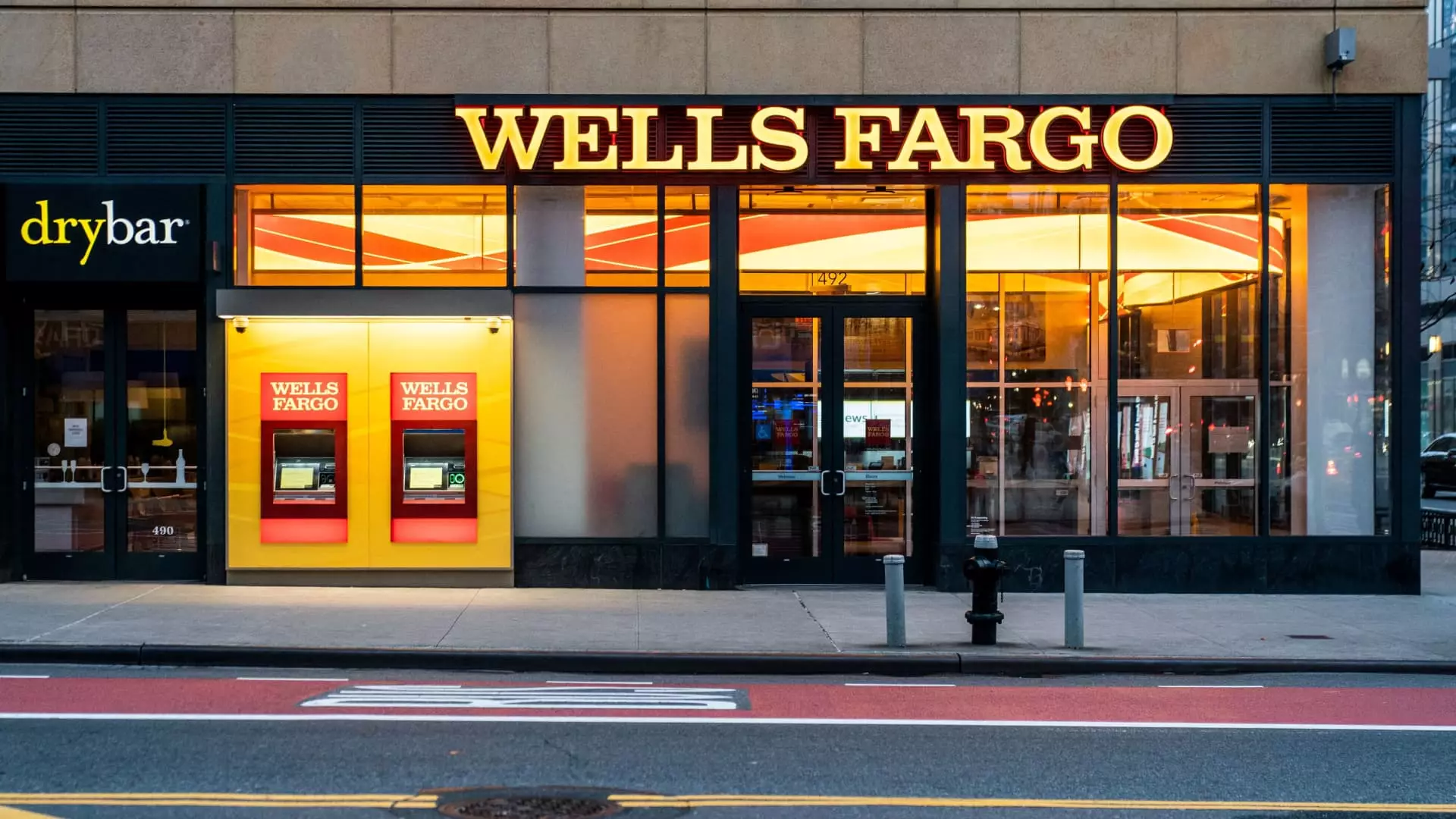Wells Fargo’s latest earnings report paints a troubling picture for investors, showing that even the largest banks in the U.S. aren’t immune to economic headwinds. On Friday, the bank announced a net income of $4.89 billion for the first quarter, a 6% increase from last year. However, this seemingly positive figure masks a more profound concern: revenue fell short of expectations at $20.15 billion, a 3% drop compared to the same quarter last year. This decline isn’t merely a statistical anomaly; it reflects deeper issues facing the bank and the broader financial industry.
While the adjusted earnings per share of $1.33 exceeded expectations of $1.24, the overall revenue shortfall of nearly $600 million has left analysts and shareholders apprehensive. In an environment where optimized performance is essential, such results can send a chilling message—especially when the bank’s shares dropped by 1% following the announcement. These numbers align with a broader trend where Wells Fargo has struggled to maintain its footing in an increasingly competitive market.
The Net Interest Income Conundrum
A significant indicator of a bank’s health lies in its net interest income, which measures the profit earned from lending versus what it pays out in interest. Unfortunately for Wells Fargo, this vital metric took a hit, declining by 6% year-over-year to $11.50 billion. This decline is particularly alarming as it underscores a more extensive issue—the bank’s ability to generate income from its core lending activities is faltering. With interest rates fluctuating and consumer confidence wavering, Wells Fargo’s reliance on traditional banking revenue streams is proving increasingly precarious.
Additionally, while noninterest income saw a modest rise of 1% to $8.65 billion, the overall picture still resonates with instability. The weak performance in net interest income is a telling sign: if the bank cannot substantially profit from loan activities, it risks slipping further behind its competitors who are adapting more rapidly to the changing economic landscape.
Economic Turbulence and Leadership Statements
Adding a layer of complication, CEO Charlie Scharf’s statements regarding the current economic climate highlight the risks that future policy changes might impose on the bank. While he expressed cautious support for the administration’s approach to trade reform, he also pointed out the inherent risks such actions may bring. Scharf’s emphasis on the need for timely resolutions in trade disputes reflects the uncertainty that clouds not just Wells Fargo, but the entire industry.
This lack of clarity could hinder not only the bank’s growth but also its capacity to maneuver through a volatile environment. Scharf’s comments about anticipating a slower economic climate in 2025 resonate quite prominently. If Wells Fargo is bracing for a downturn, it suggests that the bank is not only aware of its vulnerabilities but is preparing for what may be a challenging period ahead.
Strategic Moves Amid Concerns
In a bid to instill confidence and manage shareholder expectations, Wells Fargo undertook a substantial buyback of 44.5 million shares, totaling $3.5 billion in the first quarter. This maneuver aims to signal vigor and commitment to its investors. However, the effectiveness of such actions against the backdrop of dwindling revenues and falling net interest income is still subject to scrutiny.
Additionally, the bank reserved $932 million for credit losses, an area that could further impact its financial stability if economic conditions worsen. This provision may serve as a safeguard, but it also indicates a heightened sense of caution—a sentiment that should concern stakeholders looking for optimism in the overlooked corners of Wells Fargo’s financial landscape.
As the bank grapples with these realities, it is vital to keep an eye on the evolving economic indicators that will ultimately shape its trajectory in the months to come.

